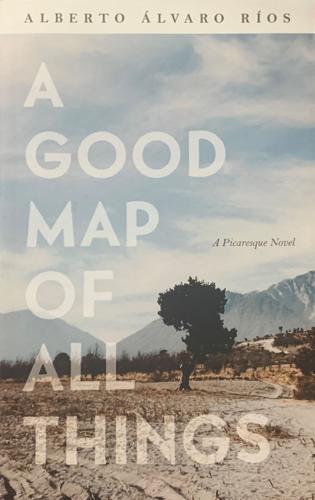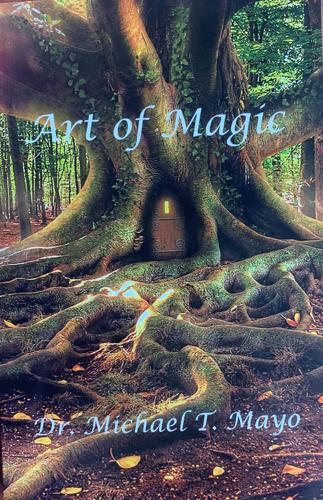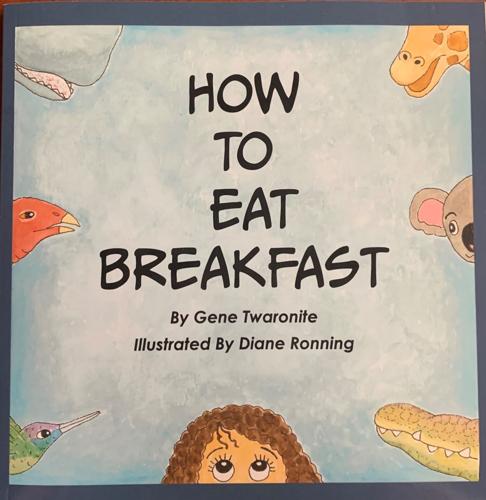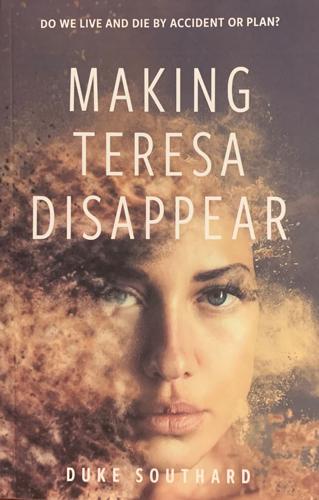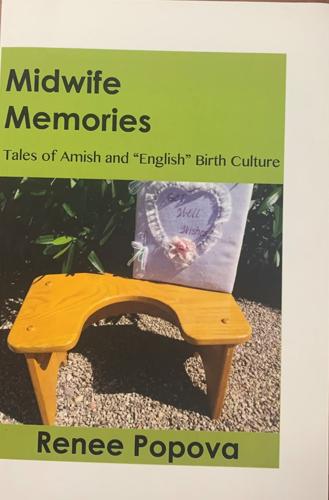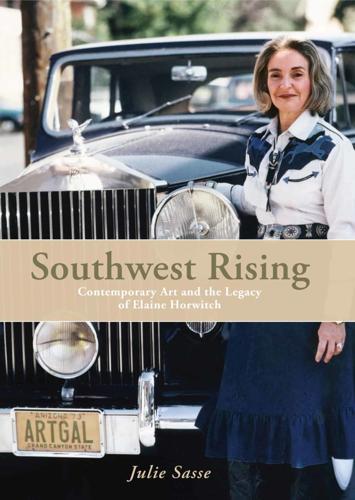“A Good Map of All Things”
By Alberto Álvaro Ríos (University of Arizona Press) $19.95.
With hints of “Our Town,” Lake Wobegon, or perhaps William Faulkner, this new novel by former Arizona Poet Laureate Alberto Álvaro Ríos realizes a unique, vibrant, embraceable, community. The book’s designation, “A Picaresque Novel,” brings to mind a Don Quixote figure, but here it’s not an individual who experiences picaresque misadventure, but the townspeople themselves.
The town doctor compares this 1950s northern Sonoran settlement to a living body. As in the human body, each part (place) has an individual function (his office, of course — he being a man of science — is the brain), but all parts are interconnected and interdependent. Together they become “a good map of all things.”
Ríos clearly cares about these folks he’s created. Whatever their weaknesses, he grants them grace: Guillermina, the outspoken town busybody, keeper of the town’s history (truth adjusted for posterity), becomes almost able to laugh at herself. Oswaldo, effectively invisible to the town, gets its attention by outdoing everyone’s competitive “giving up” for Lent. He gives up giving up: He indulges excess, eats breakfast for dinner, dinner for breakfast; he splashes on cologne for odd jobs; dons a suit to remove alley sludge. That garners the town’s respect. There’s Cayetano Belmares, the farmer of few words but gifted hands; Miguel Torrez, who, in illness, begins to see the townspeople as insects. There’s even the dog Bernardo someone “sees” riding a magic carpet. But the character Ríos is most tender with — and with whom he wanders into a sort of magical realism — is Baltasár, Cayetano’s damaged son. Baltasár’s emotional and cognitive development was arrested on the day he had a rush of sensations for — and then saw killed in an accident — his 12-year-old friend Oswaldo. Like his father, Baltasár quietly intuits nature. He also has visions. He sees things others don’t. And he finds a new direction for himself — up.
This is a novel about stories and who gets to tell them, about time, and history. It’s about how little things make up the world we know. Appearing throughout are photographs of period documents from Ríos’ own Borderlands family. There couldn’t be a more perfect read for this pandemic period than this quiet, warm, amusing work that celebrates what makes us human.
— Christine Wald-Hopkins
“Art of Magic”
By Michael T. Mayo (Queens Army LLC). $19.95 paperback; $4.95 e-book.
The latest in the series of metaphysical/fantasy books being churned out by Tucson dentist Michael T. Mayo, “Art of Magic” is uncharacteristically whimsical. “The Source” still walks with the narrator, leading him toward enlightenment. In this case, The Source offers him the gift of magic. To access it, he goes to a place in the Sonoran Desert called the “Carnival of Magic,” which contains 107 concession stands, each with a different theme and challenge. It will not come as a surprise that the narrator, Michael the Sorcerer or Michael the Wizard, will prove equal to each concession challenge.
— Christine Wald-Hopkins
“How to Eat Breakfast”
By Gene Twaronite, Illustrated by Diane Ronning. Independently published. $12.99 paperback, $5.95 Kindle.
Who doesn’t love a scrumptious breakfast? A yummy stack of pancakes is just waiting for her to dig in, but Wanda’s imagination is on the loose, conjuring up what her breakfast might look like if she were a whale or a giraffe, a hummingbird or a koala in a eucalyptus tree. A vulture’s breakfast probably wouldn’t be much fun to eat, she supposes, but if she were a termite she could eat the whole house! Tucsonan Gene Twaronite is a poet, essayist, and children’s author who knows a thing or two about making breakfast entertaining, while imparting a bit of rhyming nature lore. This latest offering, great for a read-aloud, includes lively illustrations by Diane Ronning, who likes to draw and paint at the breakfast table.
— Helene Woodhams
“Making Teresa Disappear”
By Duke Southard. Wheatmark. $17.95 paperback, $9.95 Kindle
Philosophy and treachery are two sides of the same coin in this multilayered whodunit by Green Valley author Duke Southard. A tragic bus accident causes high school student Jill Hanson to question whether the universe has a grand plan, or if life and death are random events. When a popular teacher is brutally murdered a few weeks later, Josh Solomon, a reporter for the local daily, has the same question. Is this a mere coincidence? Is some sort of karma at work? Or, as is becoming increasingly obvious, is there indeed a plan, one far more nefarious than anything the universe might have cooked up? As he digs deeper into the teacher’s past in search of an answer, Josh is stymied at every turn, shut down by authorities, threatened by strangers, and warned off by friends. Everyone seems to know something they’re not telling, leaving Josh to chip away, with bulldog tenacity, at a stone wall of subterfuge, half-truths, and secret lives. Southard, an able storyteller with a flair for lively dialogue, is the author of several novels, short stories and essays, and the winner of a Writer’s Digest Award.
— Helene Woodhams
“Midwife Memories: Tales of Amish and “English” Birth Culture”
By Renee A. Popova. Independently published. $9.99
Giving birth was such a nightmarish ordeal for Renee Popova that she took steps to guarantee she would never have to repeat it. But it filled her with a determination to educate and support pregnant women, and help them realize more positive childbirth experiences. Her journey to becoming a midwife is recounted in this volume, which takes her through her training from birthing class instructor, to doula, to fully accredited practicing midwife. An intrinsic part of her education came when she began working with the Amish and Mennonite families in her community in Wisconsin; she developed warm and rewarding relationships and learned to deeply value cross-cultural interactions. Her heartwarming recollections reveal a dedicated practitioner who clearly takes grateful satisfaction in her 30-year career, and in the joy she’s been privileged to share with her clients. Popova, who now lives in Tucson, plans a sequel to this memoir covering her educational and clinical experiences in another cultural initiative that took her to Russia.
— Helene Woodhams
“Southwest Rising: Contemporary Art and the Legacy of Elaine Horwitch”
By Julie Sasse. Cattle Track Press and Tucson Museum of Art. $26
Elaine Horwitch began selling art out of the back of her station wagon in the early 1960s and it was, by all accounts, a smart career move. By the 1970s she was well on her way to establishing eponymous art galleries in Scottsdale, Santa Fe, Sedona, and Palm Springs while nurturing art markets that could hold their own among the major U.S. art centers. Her personal style — cowgirl chic, right down to her pearl-handled pistol — was dubbed the ‘Santa Fe Look’ by fashion designers, and she became the darling of collectors and celebrities alike.
Author Julie Sasse, now chief curator of the Tucson Museum of Art, was employed by Horwitch for 14 years, and with this volume she shares her memories of the creative energy and excitement she experienced firsthand. But this more than a mere memoir and homage to an inspiring mentor. With Horwitch as the fulcrum, Sasse provides a well-documented timeline of the evolution of contemporary art in the Southwest that begins before the turn of the last century, deftly illustrating how business development and tourism in the Southwest, from Phoenix to Santa Fe and from Tucson to Taos, created the conditions that ultimately made it not only a mecca for artists and architects, but also fertile ground for collectors and patrons. As a champion of contemporary Native American, Hispanic, and folk art, Horwitch, with her larger-than-life persona, played an invaluable role in launching hundreds of artists, and in the process made a major impact on the Southwest contemporary art scene. This deeply researched and highly readable book will fascinate art aficionados and cultural historians alike.
— Helene Woodhams
“Whiskey Chords and Campfire Music”
By Dexter K. Oliver (Bandit Press 2020). $12.
Early in this slim memoir by Duncan, Arizona, resident Dexter K. Oliver, he relates an emblematic tale: Having acquired a Harmony acoustic guitar, a Mel Bay chord book, and having learned the folk tune “Follow the Drinking Gourd” (said to be a guide for runaway slaves to find and follow the North Star — the brightest star in the handle of the small dipper), young Oliver lit out from his posh Connecticut boarding school, and headed to Mexico. We don’t know if he actually made it there, but he got his bearings by “following the drinking gourd” south, rather than north. You have a sense, reading the account, that music has been his North Star throughout a bit of a rambling life.
Woven into the text — which chronicles Oliver’s expanding interest in American music, his growing performance skills, and his peripatetic career in wildlife field work — are songs he has written through the years. “Whiskey Chords and Campfire Music” includes guitar chords, lyrics and technical suggestions for playing his tunes. (This mandolin-playing reviewer just wishes it had melody lines as well.) The book has plenty of photos, plus appreciative references to musicians with whom Oliver and his wife Glenda have jammed or performed. Poignantly, it finishes with their final gig before COVID-19 shut down live music. A line from his song “Twenty Twenty (2020).” (“Raven’s on the windowsill, wolves are at the door ...”) demonstrates, as Oliver points out, that creative activity can become “historical snapshots.”
— Christine Wald-Hopkins


